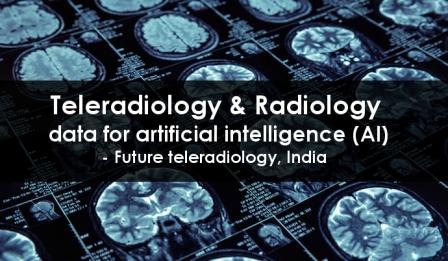
Introduction: Mammography is a pivotal tool in breast cancer detection, and the integration of artificial intelligence (AI) into the interpretation process has sparked a debate about its effectiveness compared to human expertise. This blog delves into the realm of mammography, comparing the capabilities of AI and human radiologists, and seeks to answer the question of which prevails in the critical task of breast cancer detection.
- The Significance of Mammography in Breast Cancer Detection:
- Establish the importance of mammography as a screening tool.
- Discuss how early detection through mammography significantly impacts the prognosis and treatment outcomes for breast cancer.
- The Role of Human Expertise in Mammography Interpretation:
- Highlight the historical reliance on human radiologists.
- Discuss the expertise and experience that human radiologists bring to the interpretation of mammograms.
- The Emergence of AI in Mammography: Enhancing Analytical Capabilities:
- Introduce the advent of AI in mammography.
- Discuss how AI, with its analytical capabilities and pattern recognition, is being integrated to augment the interpretation of mammograms.
- AI’s Potential Advantages: Speed, Consistency, and Processing Power:
- Explore the potential advantages of AI in mammography.
- Discuss how AI offers speed, consistency, and enhanced processing power, potentially addressing some of the limitations associated with human interpretation.
- Addressing False Positives and False Negatives: A Critical Comparison:
- Examine the issue of false positives and false negatives in mammography.
- Compare how AI and human radiologists handle these challenges, considering factors such as sensitivity and specificity.
- The Learning Curve: AI’s Adaptability vs. Human Expertise:
- Discuss the adaptability of AI algorithms.
- Compare how AI quickly adapts and learns from large datasets, contrasting with the continuous learning and experience accumulation of human radiologists.
- Data Diversity: How AI and Human Expertise Navigate Variability:
- Explore the impact of data diversity on interpretation.
- Discuss how both AI and human expertise navigate the variability in mammographic images, including variations in breast density and image quality.
- Complex Cases and Clinical Judgment: The Strengths of Human Radiologists:
- Highlight the strengths of human radiologists in complex cases.
- Discuss the role of clinical judgment, experience, and contextual understanding that human radiologists bring to challenging mammographic interpretations.
- Integration Challenges: AI in the Radiology Workflow:
- Discuss challenges related to the integration of AI into the radiology workflow.
- Explore issues such as workflow disruption, acceptance by healthcare professionals, and the need for seamless collaboration between AI and radiologists.
- AI as a Screening Tool: Enhancing Population-Level Detection:
- Discuss the potential of AI as a screening tool.
- Explore how AI’s efficiency can enhance population-level breast cancer detection, especially in areas with limited access to radiologists.
- Interpretation Consistency: AI’s Promise vs. Human Variability:
- Compare the consistency of AI interpretations with human variability.
- Discuss how AI promises a consistent approach to interpretation, avoiding variations associated with human factors.
- Patient-Centered Considerations: Communication and Compassion:
- Discuss patient-centered considerations.
- Explore the importance of the human touch in mammography, including effective communication of results and the compassionate care provided by human radiologists.
- Ethical and Legal Implications: Navigating Complexities in AI Integration:
- Address ethical and legal considerations in AI integration.
- Discuss issues such as accountability, liability, and the need for transparent and ethical deployment of AI in mammography.
- Ongoing Research and Advancements: The Evolving Landscape:
- Highlight the dynamic nature of research and advancements.
- Discuss ongoing studies and innovations in both AI and human radiology that contribute to the continuous improvement of breast cancer detection.
- Patient Preferences and Informed Decision-Making: A Balancing Act:
- Explore patient preferences in mammography.
- Discuss the importance of informed decision-making, where patients may have preferences for AI-assisted interpretations or human radiologist-led evaluations.
- Collaboration Between AI and Human Radiologists: A Synergistic Approach:
- Advocate for collaboration between AI and human expertise.
- Discuss how a synergistic approach, combining the strengths of AI and human radiologists, may offer the most comprehensive and effective solution in mammography.
- Conclusion: Striking a Balance for Optimal Breast Cancer Detection: Summarize key points from the comparison. Conclude with the idea that striking a balance between AI and human expertise in mammography is crucial for achieving optimal breast cancer detection, ensuring accuracy, efficiency, and patient-centered care in the evolving landscape of breast imaging.
Service Areas:- North Goa – Bardez, Tiswadi, Ponda, Bicholim, Pernem, Satari; South Goa – Salcete, Mormugao, Quepem, Sanguem, Canacona.
Summary

Service Type
Teleradiology
Provider Name
Future Teleradiology Solutions, Telephone No.+91 99605550010
Area
North Goa - Bardez, Tiswadi, Ponda, Bicholim, Pernem, Satari; South Goa - Salcete, Mormugao, Quepem, Sanguem, Canacona.
Description
"Decoding Mammography: A Comparison of AI and Human Expertise – Which Prevails?" is likely a study or article that explores the effectiveness of artificial intelligence (AI) in interpreting mammography images compared to human expertise. The focus is likely on breast cancer detection and diagnosis, a critical area in healthcare. The short description suggests a comparative analysis between the accuracy and reliability of AI algorithms and human radiologists in interpreting mammograms. The central question posed is which method, AI or human expertise, demonstrates superior performance in this specific medical context. The study likely delves into the implications for healthcare practices and the potential integration of AI technologies in improving mammography outcomes.